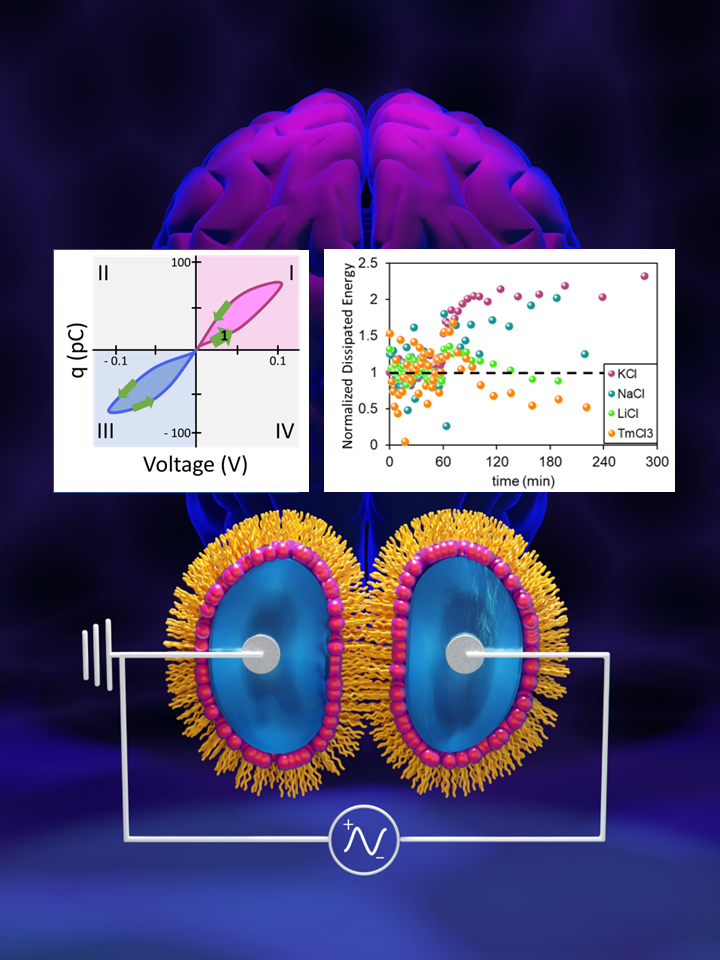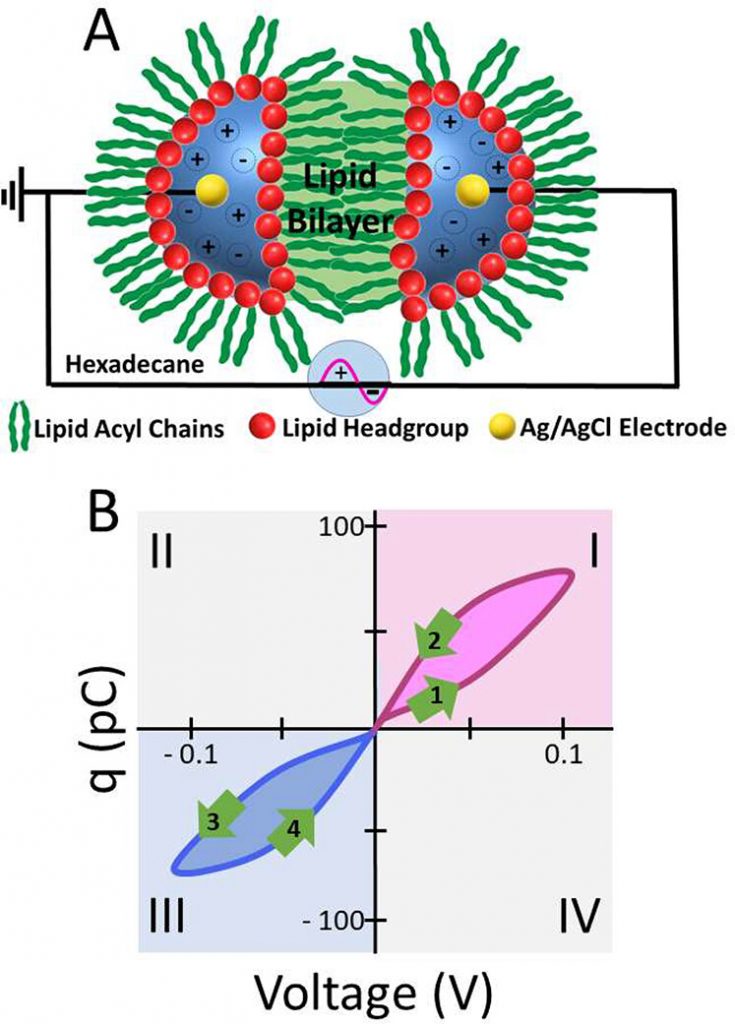
September 18, 2023
Scientific Achievement
Long term potentiation (LTP) an important feature of learning and memory in the brain is sensitive to different salts (KCl, NaCl, LiCl, and TmCl3), with LiCl and TmCl3 having the most profound effect in depressing LTP, relative to KCl.

Significance and Impact
LTP is the result of nonequilibrium steady state where the membrane’s structure and dielectric properties are altered, while it dissipates energy in the form of heat.
Research Details
- Droplet interface bilayers (DIBs) consisting of nm-thick planar lipid bilayers that form on contact between lipid coated aqueous droplets in oil were used for electrical measurements.
- Electrical stimulation training consisted of a low-frequency sinusoidal voltage that induced structural rearrangements of the bilayer, generating long-lived LTP in the form of stored capacitive energy.
- Different salts (KCl, NaCl, LiCl, and TmCl3), were used to measure their effect on LTP.
Related Publication: Scott, H. L. et. al. (2023). Cations Control Lipid Bilayer Memcapacitance Associated with Long-Term Potentiation. ACS Appl. Mater. Interfaces, 2023. doi.org/10.1021/acsami.3c09056
